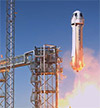Texas Today 2014: A Magnet for Job Growth
Low taxes, smart regulation, and skilled workers - not to mention probusiness incentives — are among the reasons Texas is continuing to build on its huge and diverse economy.
Q2 2014
At one state-of-the-art campus that will include more than a million square feet and include a $300 million investment, Toyota plans to bring together its North American headquarters for manufacturing, sales and marketing, finance, and corporate operations. “Ultimately, enabling greater collaboration and efficiencies across Toyota will help us become a more dynamic, innovative, and successful organization in North America,” said Jim Lentz, CEO of Toyota’s North America Region, in a statement. “With our major North American business affiliates and leaders together in one location for the first time, we will be better equipped to speed decision-making, share best practices and leverage the combined strength of our employees.”
With our major North American business affiliates and leaders together in one location for the first time, we will be better equipped to speed decision-making, share best practices and leverage the combined strength of our employees. Jim Lentz, CEO of Toyota’s North America Region The move underscores the Lone Star State’s emergence as an automotive powerhouse, industry-backers in Texas say. It already ranked sixth in the nation in automotive manufacturing employment, according to a report from the governor’s office last year, with nearly 34,000 workers at almost 500 different manufacturing operations across the state. The industry took a hit during the Great Recession, but auto-manufacturing employment grew 19 percent in Texas between 2009 and 2012, and auto parts manufacturing jumped by 29 percent. Among others, Toyota already was turning out Tacomas and Tundras at a $2.3 billion facility San Antonio, and General Motors has been in Arlington about six decades and now turns out SUVs at a rate of about one a minute.
Toyota’s decision, encouraged in part by a $40 million incentive from the governor’s Texas Enterprise Fund, doesn’t surprise the state’s boosters. It’s a business-friendly regulatory environment known for low taxes — in fact, there is no corporate or personal income tax, and the state regularly performs well in the Tax Foundation’s State Business Tax Climate Index. As Tony Bennett, president of the Texas Association of Manufacturers, declared in a Fort Worth Business Press article about the Toyota deal, Texas is “heaven on earth for manufacturers.”
“When a company that already has a $2.3 billion manufacturing facility in Texas, supporting more than 6,000 jobs, decides to expand in the state, this shows Texas’ economic principles have created a stable environment that welcomes growth and success,” says Jonathan W. Taylor, executive director of the Economic Development and Tourism division in the Office of the Governor Rick Perry.
Diverse Moves
Toyota’s plans represent a kind of move that has not been uncommon. Another coup came in mid-February, when Occidental Petroleum announced plans for its own California-to-Texas headquarters move. It’s part of a proposed split in the company that would allow Occidental to focus more on its Permian Basin operations in Texas. Among others, Raytheon Company last year moved its space and airborne systems unit from Southern California to McKinney, Texas. Calpine Corp. left San Jose for Houston in 2009, and the Dallas area lured Fluor Corp. from Orange County in 2006. According to Texas Governor Rick Perry, some five dozen companies have moved to Texas in the past couple of years.
Last fall marked the grand opening of the new The new Flextronics manufacturing facility, built for final assembly and customization of Motorola Mobility’s Moto X smartphone - the first smartphone to be designed, engineered, and assembled in the United States. Texas may be an up-and-coming automotive powerhouse, but as those moves suggest, it is anything but a one-trick pony. For one thing, manufacturing as a whole — not just auto manufacturing — has been gaining. It’s up 7.2 percent since 2010, and Texas leads the nation in the total value of shipments of manufactured goods. Electronic product manufacturing is a big exporting industry — one of the reasons Texas has been the top exporting state for 11 years in a row.
A look back at the past year provides ample evidence of the economic vitality and diversity that earned the state acclaim last year as the top state for doing business, yet again, according to Area Development’s survey of location consultants. Last fall, for example, marked the grand opening of the new Flextronics manufacturing facility, built for final assembly and customization of Motorola Mobility’s Moto X smartphone. It’s the first smartphone to be designed, engineered, and assembled in the United States. USAA is another success story. It announced plans last fall to expand its IT operations in Plano, creating 680 jobs.
GEICO, meanwhile, announced last December that its claims operations in Katy would expand, adding a thousand jobs over three years. “We know from the experience we’ve already had in Houston that it’s a great environment for business, the workforce is excellent, and the quality of life is outstanding,” according to the company’s chairman, president, and CEO, Tony Nicely.
Also, Kohl’s Department Stores announced plans for a customer service operations center in Dallas. Like many other Texas success stories, this one was supported by incentives from the Texas Enterprise Fund, and while that investment was specifically tied to the creation of 144 jobs, Kohl’s ultimately expects to add more than 1,500 new faces. The company began hiring the first 500 people this past spring.
Websense Inc. is yet another company announcing plans for a California-to-Texas move, announcing plans to relocate its corporate headquarters from San Diego to Austin. That would create 445 new jobs. In making the announcement, Websense CEO John McCormack said, “We are expanding our presence into Austin because it represents an energetic, high-technology hub that will further enable us to meet growing demand for our technology and better serve our global customer base.”
Also adding jobs in Austin is Dropbox Inc., which earlier this year announced its intention to create 170 sales and operations positions. According to Sujay Jaswa, vice president of business, “We were drawn to Austin because of the talented people and vibrant tech culture.”
And yet another tech-based company growing in Austin is athenahealth Inc., expanding its operations with 607 jobs. The company’s new Austin facility will support its cloud-based health information technology services platform.
Closing Deals & Financing Prosperity
Most of the state’s big economic development headlines were made possible in part by incentives from the Texas Enterprise Fund. It’s a “deal-closing” fund, the largest of its kind in the country, created about a decade ago and replenished by the state legislature every two years. In its first decade or so, the fund has invested half a billion dollars in business growth projects that have created more than 70,000 jobs and sparked investments totaling some $24 billion.
Because the fund’s focus is being competitive and closing deals, recipients have to be considering sites in other states too, and must not have already made up their minds about where to go. They must be planning to create a significant number of jobs, generally at least 75 for urban developments and 25 or more in rural areas. Those jobs must pay above-average wages compared to others in the area, and the employer must be planning a significant capital investment. The Texas Enterprise Fund, a “deal-closing” fund, is the largest of its kind in the country...In its first decade or so, the fund has invested half a billion dollars in business growth projects that have created more than 70,000 jobs and sparked investments totaling some $24 billion
The Texas Enterprise Fund is all about return on the investment of public funds, with award dollars based on everything from the number of new jobs, the average wages to be paid, and the timeframe for hiring. Past awards have ranged from about $200,000 to $50 million. The governor, the lieutenant governor, and the speaker of the House must approve the projects.
Exciting as big economic-development wins may be, it’s equally important that businesses already in Texas are healthy and growing. Among the tools for making that happen is the Texas Product/Business Fund, which helps businesses develop, produce, and commercialize new or improved products. The incentives are aimed especially at the defined industry clusters the state is hoping to grow, including nanotechnology, biotechnology, biomedicine, renewable energy, agriculture, and aerospace.
The state also lends a hand to local communities that aim to support local employers. The Texas Leverage Fund is for those communities that have an economic development sales tax; it provides low-cost loans so those communities can leverage future sales tax revenues to facilitate business expansions, business recruitment, and increased exporting. The industrial revenue bond program, meanwhile, lets local governments offer bond financing to cover capital costs for industrial or manufacturing businesses.
Texas continues to sharpen its tools for economic development, according to Taylor. “During its most recent legislative session, Texas expanded the use of community economic development funds for job-related skills training, appropriated $50 million to the Emerging Technology Fund, and reformed its franchise tax to lessen the burden on large and small companies,” he says. “The state also passed a number of tax credit bills, including House Bill 800, which creates R&D incentives by allowing companies a franchise tax credit or a sales exemption for materials, software, and equipment used for R&D purposes.”
Ahead of the Game
Having a powerful manufacturing sector is one secret to success in Texas. Another is ensuring that things are not just built there, but conceived and created. A strong R&D culture is essential, and that takes continual nurturing.
Texas already has developed more wind power generation capacity than any other state, and last year about 10 percent of the state’s power supply came from wind. This past March, Texas set a record for the volume of wind power blowing onto the grid, which at about 10,300 MW represented 29 percent of the electricity on the grid at that moment. That’s where the Texas Emerging Technology Fund comes in. It was created in 2005 to build an advantage in research, development, and commercialization of emerging technologies. Its grants help companies bring new technologies from concept to development, create public-private partnerships to encourage research, and help the state’s higher-education institutions recruit and retain some of the world’s best minds for research.
One recent example of the fund’s work was the creation of the Center for Cell and Organ Biotechnology, involving the Texas Heart Institute and Texas A&M University College of Veterinary Medicine and Biomedical Sciences. A $3 million investment from the Texas Emerging Technology Fund got the ball rolling for the center, which will tackle chronic disease for both human and veterinary healthcare, based on cell and organ failure.
Another example is an effort by the Texas Tech University System to expand wind power research and attract industry. For more than four decades, Texas Tech has had one of the nation’s leading wind research programs, and wanted to attract more top talent to leverage its expertise and take advantage of the abundant wind resources. The Texas Emerging Technology Fund chipped in $8 million to help the cause. Texas already has developed more wind power generation capacity than any other state, and last year about 10 percent of the state’s power supply came from wind. This past March, Texas set a record for the volume of wind power blowing onto the grid, which at about 10,300 MW represented 29 percent of the electricity on the grid at that moment.
Clusters of Interest
The Texas economy is large and diverse, and state and local economic development officials cheer any opportunity to add to the employment base. “Although Texas has a long history with agriculture and energy, our diverse economy is home to industries from biotechnology to telecommunications to manufacturing,” says Taylor. “Our economic development strategy focuses on sectors with high-growth potential, such as advanced technology and manufacturing, information and computer technology, energy, and life sciences.”
Energy - This may be the best known of the state’s longstanding industries. Nearly half of the nation’s operational oil and gas rigs are in Texas — more than 800 of them. But this sector is more than just oil. Texas is a major player in nuclear power, and has more installed wind generation capacity than any other state. It’s the only state with its own electrical grid.
Petroleum Refining and Chemical Products - More than two-dozen refineries call Texas home, providing more than a quarter of the nation’s refining capacity. The ExxonMobil refinery in Baytown is the nation’s largest in terms of input capacity. There also are hundreds of chemical plants, particularly along the Texas Gulf Coast, which is the world’s largest petrochemical complex.
Advanced Technology and Manufacturing - As the headlines above make clear, this is a big and growing sector known for high-paying jobs. This sector includes nanotechnology, semiconductors, and automotive manufacturing. Texas was the birthplace of the integrated circuit, and automotive manufacturing is so big that the state generated nearly $25 billion in transportation equipment exports last year.
Aerospace, Aviation, and Defense - This should come as no surprise, given that Texas is home to a couple of international airlines, two of the busiest airports in the world, the Johnson Space Center, and some 15 military bases. More than 150,000 people work in aerospace and aviation in Texas, and they take home salaries that average about $81,000.
Biotechnology and Life Sciences - Nearly 90,000 Texans make a living in biotech-related sectors. The state is known for groundbreaking research and world-renowned treatment, thanks in part to the Texas Medical Center in Houston, which is the world’s largest, and MD Anderson Cancer Center, perennially named the best cancer center in the country.
Information and Computer Technology - Two big names in this business are Texas Instruments (TI) and Dell Computers, both founded and based in Texas. TI, in fact, invented the handheld calculator. Texas has the nation’s second-largest number of computer and videogame employees.
Building a Powerful Economy
Countless very deliberate efforts have played into the Texas economic development success story. “The Texas business climate provides the best opportunity for success because of our low taxes, smart regulations, fair courts, and skilled workforce,” concludes Taylor. “We provide the freedom and stability employers need to risk their capital, create jobs, and keep more of what they earn.”
A Letter from Rick Perry, Governor of Texas
 Greetings:
Greetings:
Texas Wide Open for Business is more than just positive thinking. It’s an environment we’ve created in the Lone Star State to foster business and entrepreneurship — to train the workforce of the future and make Texas the best place to live, work, and raise a family. I invite you to bring your company to Texas to take advantage of our fundamentally strong economy as a stepping-stone to success and prosperity.
As a global leader in economic development, Texas is committed to working with employers worldwide to ensure the ideal conditions for job creation and economic prosperity. Our infrastructure, geographic location, and business climate are optimal for business expansion and relocation.
Texas is recognized around the world for its pro-business climate. In 2013, CNBC named Texas “America’s Top State for Economy and Infrastructure,” adding to our state’s growing list of accolades. Texas has also been named the “Best State to Do Business” by Chief Executive magazine for the past nine years in a row. If Texas were a nation, it would rank as the 13th-largest economy in the world based on GDP, and Texas has been the nation’s top exporting state for 12 years. Texas has also created more private-sector jobs than any other state in the nation over the last 10 years.
In addition to our superior quality of life and robust economic climate, the Lone Star State has one of the lowest business tax burdens in the United States.
Texas also levies no personal income tax, which allows businesses to pass on more value to their employees. We also offer a number of attractive incentives, such as the Texas Enterprise Fund and the Texas Emerging Technology Fund, which have helped bring thousands of jobs to Texas.
In short, Texas is doing what it takes to help businesses succeed and create jobs in our great state. To explore how your business could prosper in Texas, contact Jonathan Taylor, executive director of my Economic Development and Tourism division, at (512) 936-0101 or jtaylor@governor.state.tx.us.
Sincerely,
![]()
Rick Perry
Governor of Texas
Project Announcements
Japan-Based MGC Pure Chemicals America Expands Killeen, Texas, Operations
06/27/2025
Ireland-Based Linde Plans Brownsville, Texas, Operations
06/12/2025
Taiwan-Based Wiwynn Plans Socorro, Texas, Production-Testing Operations
06/09/2025
The Steel Network Plans Taylor, Texas, Manufacturing Operations
06/05/2025
Tokyo Electron U.S. Expands Austin, Texas, Operations
05/26/2025
R+L Carriers Plans Abilene, Texas, Trucking Operations
04/08/2025
DSM Semichem Expands Plainview, Texas, Operations
04/01/2025
Space Exploration Technologies Corporation Expands Bastrop, Texas, Operations
03/16/2025
Schneider Electric Expands El Paso, Texas, Operations
03/16/2025
KoMiCo Technology Expands Round Rock, Texas, Operations
03/07/2025
Apple Plans Houston, Texas, Manufacturing Operations
03/01/2025
Japan-Based Vinton Steel Expands El Paso, Texas, Scrap Recycling Operations
03/01/2025
South Korea-Based Dongjin Semichem Expands Killen, Texas, Operations
02/15/2025
Coast Packing Company Establishes Amarillo, Texas, Operations
02/09/2025
Most Read
-
20th Annual Area Development Gold and Silver Shovel Awards
Q2 2025
-
In Focus: AI Is Changing Incentives Math
Q2 2025
-
Optimizing Your Rail-Served Transportation Network: Strategy Before Steel
Q2 2025
-
How to Choose the Right Site for Your Factory in 2025’s Volatile Landscape
Q2 2025
-
From Silicon to Server: Mapping the Data Center Supply Chain
Q2 2025
-
Tariffs, Talent, and U.S. Expansion
Q3 2025
-
First Person: David Robey, Co-CEO of QTS Data Centers
Q2 2025



